Long ago, legend tells, an ancient civilization of unfathomable knowledge and power was doomed by the gods and swallowed by the ocean’s tide. “In a single day and night of misfortune,” Plato spoke in his Critias dialogues over two thousand years ago, “the island of Atlantis disappeared in the depths of the sea.”
It turns out that Plato’s tale of Atlantis’ fall was merely a prologue. In the thousands of years since, academics, explorers, and adventurers have set out into the surf, intent on discovering the secrets of the lost continent… And since 1998, voyages into the remains of Atlantis have departed from none other than SeaWorld Orlando.
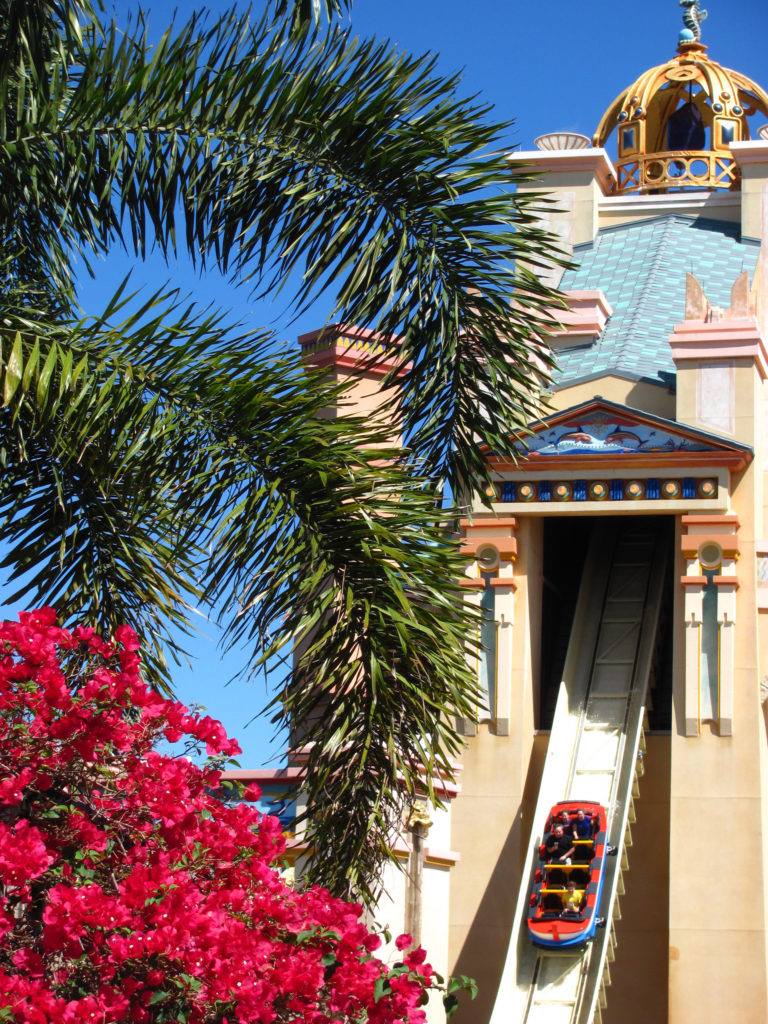
One of the most ambitious attractions ever conceived for SeaWorld Parks, Journey to Atlantis once stood as an emblem of a new direction; a spark signaling SeaWorld’s intent to challenge its famous Orlando neighbors head-on. Concocting a mythology all its own, this dark ride adventure took the nautical fable of Atlantis and introduced entirely original characters, spectacular special effects, and even a secret or two.
Today, though, it’s hard to characterize this one-time E-Ticket as anything but sunk. The strange-but-true story of a dark ride abandoned in plain sight – yet still open to guests – is the perfect addition to Park Lore’s library of Declassified Disasters, diving deep into the stories behind famous flops from around the industry. So as we sail through the tale of Journey to Atlantis, you just may come away with the uneasy feeling that Atlantis is doomed to disappear beneath the waves once more.
And before we head off, remember that you can unlock rare concept art and audio streams in this story, access over 100 Extra Features, and recieve an annual Membership card and postcard art set in the mail by supporting this clickbait-free, in-depth, ad-free theme park storytelling site for as little as $2 / month! Become a Park Lore Member to join the story! Until then, let’s start at the beginning…
At least for our purposes, the story of Journey to Atlantis probably begins with a simple question…
What is SeaWorld?
SeaWorld. Given just that word – SeaWorld – what comes to your mind? What images? Thoughts? Sounds? Feelings? What is SeaWorld?
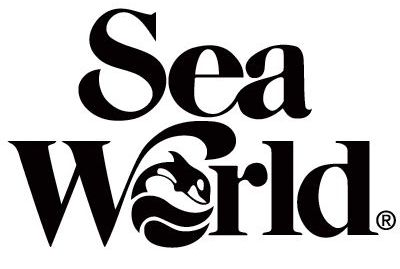
On a grand, philosophical level, some view SeaWorld as an inspiring animal park and organization that provides up-close encounters with living creatures that, otherwise, would feel a world away. If it weren’t for SeaWorld, after all, many Americans might never see a sea lion, dolphin, manatee, shark, or orca in person in their entire lives… In that way, one might argue, SeaWorld helps us connect with and care about the preservation of sea life.
And yes, a competing (and recently, increasingly vocal) group suggests that SeaWorld is something fundamentally quite different: a horrific and historic perpetrator of animal rights violations and moral reprehensibility; that the park exploits wild animals, enclosing them in cheery blue “swimming pools” for human entertainment; that SeaWorld should be closed, the animals released to natural sanctuaries, the park razed, and the Earth salted where it stood.
But today, we’ll avoid that (important) discussion in favor of a simpler thought… Morality and philosophy aside, what is SeaWorld – as in, literally?
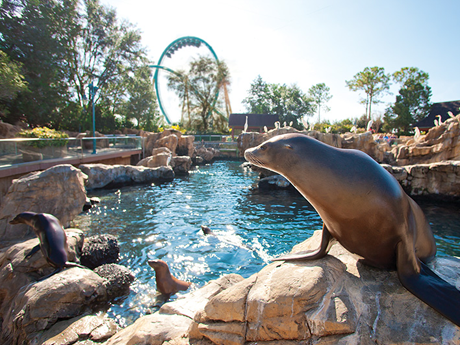
Maybe you’d label it a zoo, given its emphasis on animal enclosures and encounters. Folded in here is SeaWorld’s commendable animal rehabilitation and release program (which has rescued well over 25,000 animals in its history) and its AZA-accredited zoological practices (including enrichment, veterinary care, exhibit design, etc.) that, observably, make it not just a zoo, but a very, very good zoo… (and a very, very expensive one, with admission many times costlier than your local zoo.)
Maybe you’d call it a theme park. After all, time, money, and care have been spent crafting themed “lands” with notable detail, some well-designed dark rides, and entertainment (both animal and acrobatic) quite unlike anything else in Orlando. SeaWorld stands apart from your local amusement park in so many ways.
But in just as many ways, it doesn’t stand apart. Frankly, isn’t SeaWorld a thrill park, with its anchor attractions all being bare, behemoth steel roller coasters to rival any Six Flags or Cedar Fair park?
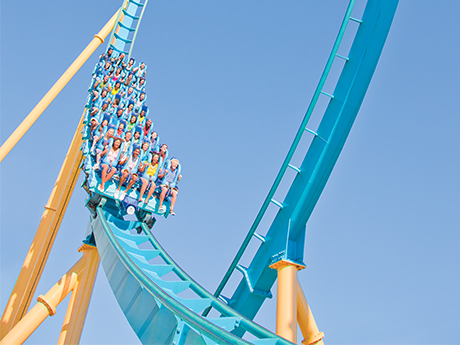
Animal park? Theme park? Amusement park? The uncomplicated answer is that SeaWorld is all of those, and more. That’s because – unlike Disney or Universal’s parks – SeaWorld Parks have changed hands many times in the more-than-sixty years since the first opened in San Diego in 1959. At each moment, new leadership, revisioning, competition, finances, and yes, social pressure, have altered the course of the parks, each era marked by new answers to that fundamental question of what SeaWorld is.
Like so many ancient epics, the story of Orlando’s Journey to Atlantis begins in medias res – right in the middle of the history of SeaWorld. In 1989, the four SeaWorld Parks (in San Diego, Cleveland, Orlando, and San Antonio) were acquired by a company whose involvement would change SeaWorld, its identity, and its attractions forever…
Epic adventures
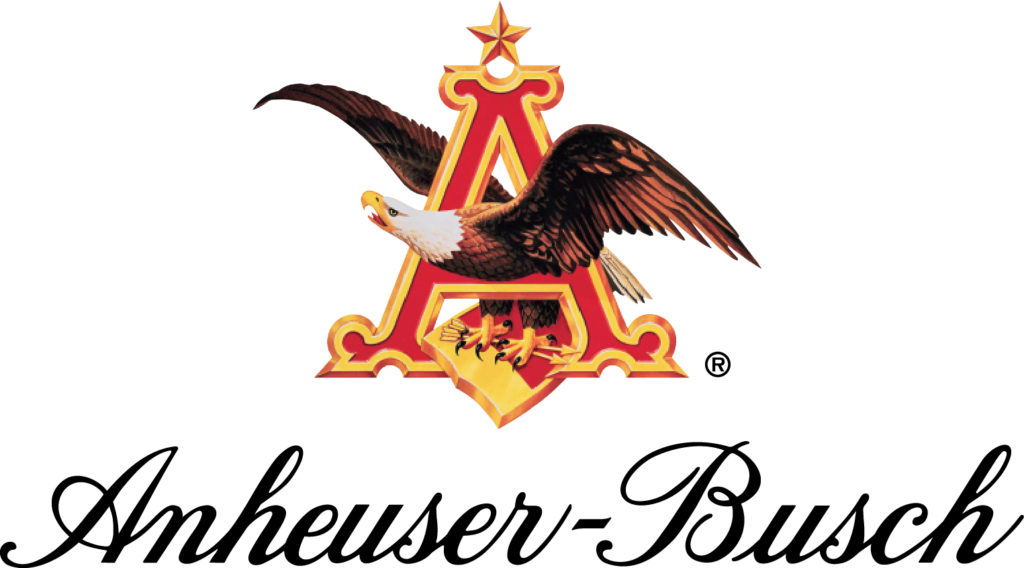
On the surface, there’s not much about Anheuser-Busch that would suggest they’d be interested in SeaWorld. Even if the 1980s and ’90s had seen a wave of movie studios try to break into the “studio park” business, the international brewing company (producers of Budweiser, Bud Light, Michelob, Rolling Rock, Shock Top, and dozens of other recognizable alcoholic beverages) seemed to have no connection to the world of theme parks whatsoever, much less an interest in operating animal parks.
Behind the scenes, though, the beer behemoth had a résumé perfect for overseeing SeaWorld. And in fact, they’d been operating their own theme parks for decades. Anheuser-Busch breweries in Williamsburg, Virginia and Tampa, Florida had long been adjoined by their own botanical attractions-turned-modern-theme-parks – Busch Gardens.
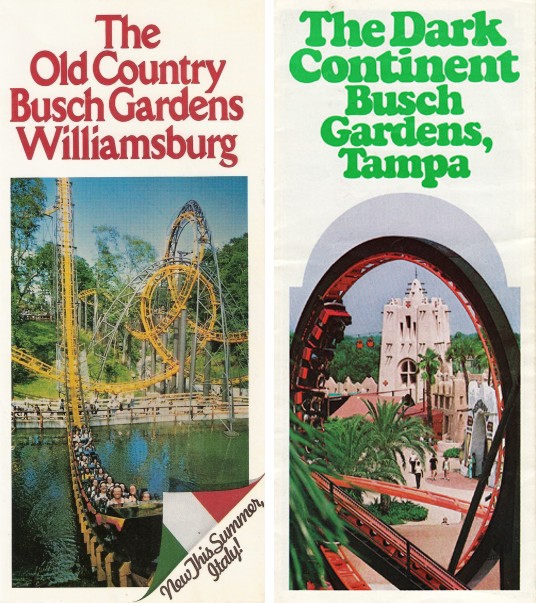
Designed as odes to Europe and Africa, respectively, the Virginian and Floridian parks were then (and remain today) a unique blend of “thrills and theme.” Each offered a sleek, modern steel coaster or two, of course, but the emphasis at these surprisingly cultural parks was on entertainment, shopping, dining, and being “immersed” in villages and towns representing the vast geography of their respective continents.
(The Williamsburg park, in particular, has hosted four rides notable enough to earn their own Park Lore entries – the Lost Legends: Big Bad Wolf and Curse of DarKastle and the Declassified Disasters: Drachen Fire and Europe in the Air.)
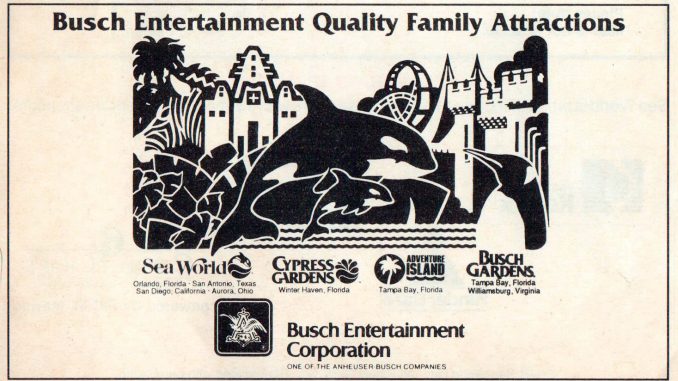
So upon their purchase in 1989 by the brewing company, the four SeaWorld Parks were pretty effortlessly folded into the Busch Entertainment Corporation’s park portfolio.
You can imagine why Busch took particular interest in SeaWorld Orlando. After all, SeaWorld had been a staple of International Drive since 1973 (an early entry in the Central Florida market, just two years after Walt Disney World). Acquiring the park gave Busch a bastion not only in the rapidly-expanding Orlando market, but at just the right time – just as the Disney-MGM Studios (1989) and Universal Studios Florida (1990) evolved the region into what we know today – the family tourism capital of the world.
(Busch was really ahead of the game. The opening of the two “studio parks” in the Orlando would subsequently lower to the barrier to entry into the theme park industry. Entertainment companies like Paramount, Warner Bros., and more would quickly jump headlong into the fray, building, buying, or licensing their brands to “studio parks” across the world – the ripples of the “Ride the Movies” era still felt today.)
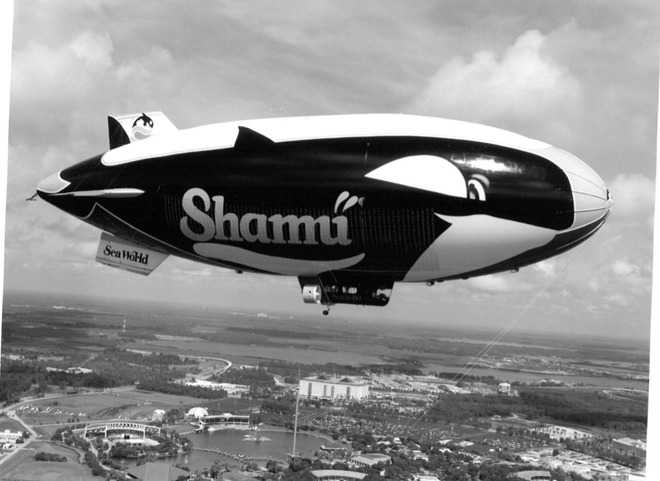
Literally directly in between Walt Disney World and Universal Studios, Busch’s SeaWorld Orlando was either positioned perfectly or precariously… The little marine life park with its ’70s animal displays, water-ski shows, quaint botanical gardens, and observation tower would either be obliterated by the big-budget battle of two international entertainment companies… or rise to meet them.
“What is SeaWorld?” What if it could be a destination theme park in its own right? Transformed into a modern attraction with an army of “E-Tickets,” holding their own against the big-budget bombs dropped between Disney and Universal? Could SeaWorld rewrite its own story? Could it truly meet – or even exceed – Disney’s rides?
Wild life, wild rides
Disney had broken new ground with the incomprehensibly complex (and expensive) simulator technology that powered Disneyland’s Lost Legends: STAR TOURS (1987) and EPCOT Center’s Body Wars (1989).
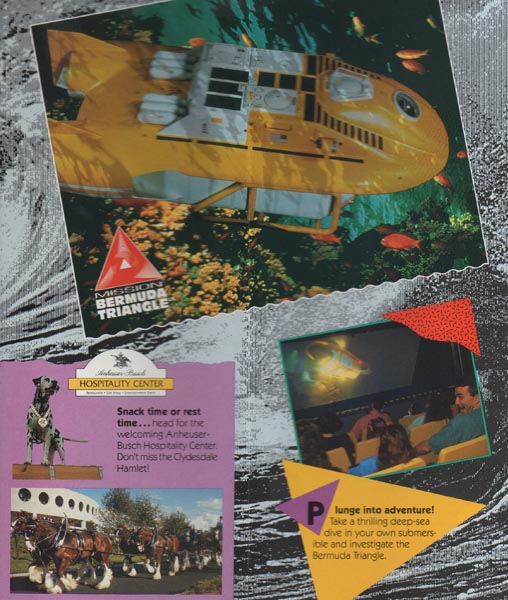
Who would’ve expected little SeaWorld to master the technology next? Yet in 1992, Busch’s first serious play in redefining their animal park launched with Mission: Bermuda Triangle. It was surprising enough to see SeaWorld leverage such a still-new technology. But even more notable was the narrative shift it signaled for the park.
Unlike the tepid, National Geographic-style exploration guests might’ve expected from the straight-laced SeaWorld, Mission: Bermuda Triangle plunged riders into a dramatic submarine quest, encountering deep-sea creatures, rusted shipwrecks, and magnetic anomalies in a thrilling journey through the supposedly-supernatural occurances of the mysterious Bermuda Triangle – a fittingly oceanic counterpart to the bloodstream or “a galaxy far, far away,” and from SeaWorld!
A-ha! Why couldn’t SeaWorld be a theme park, with rides focused on nautical legends and wild adventures told in the vein of Disney and Universal’s best?!
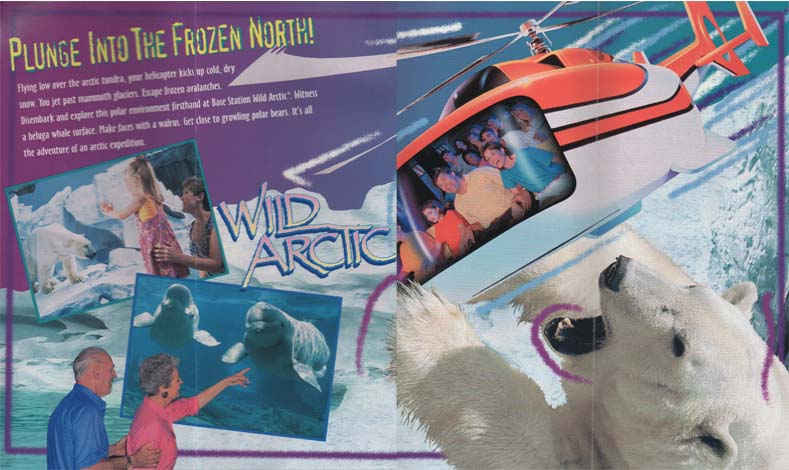
Just a few years later, SeaWorld caught on to the technology’s adaptability long before Disney would, swapping the queue and ride film to create Wild Arctic for 1995. The simulators switched from subs to helicopters, flying guests on a frigid and perilous journey to a North Pole research station. Even more radically, Wild Arctic’s simulated flight was only the prelude to an animal encounter, as exiting guests would step not into a gift shop, but into an enormous “arctic research base” simulating freezing conditions and serving as home to the park’s Arctic animals like beluga whales and polar bears.
SeaWorld’s quick and cutting-edge adaptation of the still-new Star Tours technology demonstrated a new model for the park. Not only could SeaWorld raise itself to meet the cinematic splendor of Disney and Universal by way of telling nautical fables… it could do what its competitors couldn’t: plugging signature animal experiences right into the attractions.
The Age of Ambition
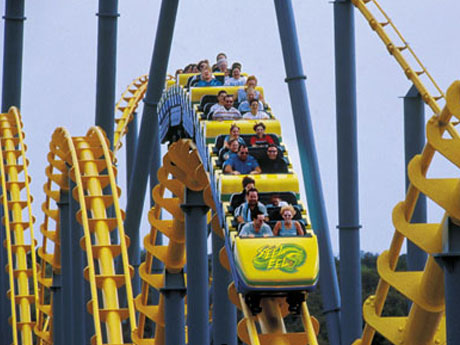
At the same time that SeaWorld’s Orlando park was arming itself against Disney and Universal, its other three parks – San Diego, San Antonio, and Cleveland – began to experiment with that fundamental question – what is SeaWorld? – via their own forays into thrills, largely tuned to the regional needs and competitions they faced.
In San Antonio (less than 30 minutes from Six Flags Fiesta Texas, mind you), two steel coasters rose above SeaWorld’s otherwise unassuming skyline, with Great White (1997) and Steel Eel (1999, above) redefining the park for the region. For Texans, SeaWorld was no longer just a marine life zoo; it was an animal park with thrills.
Meanwhile, clones of the Orlando simulator spread, too. Wild Arctic opened in San Diego in 1997.
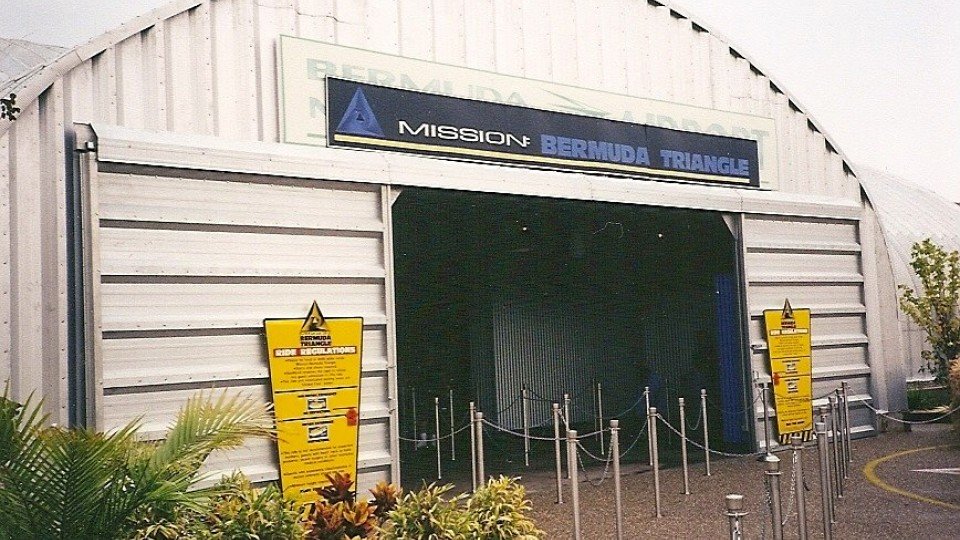
Even SeaWorld Ohio near Cleveland got in on the transformation, opening its own Mission: Bermuda Triangle simulator (above) in 2000 – a first (and ultimately, last) step in the Cleveland-area park becoming something more than the family animal park it had been since opening in 1970.
(Even then, SeaWorld had no illusions about building mega-coasters at its Ohio park. SeaWorld Ohio sat on the edge of a spring-fed lake with Six Flags Ohio on the opposite shore. Given that a non-compete clause kept SeaWorld Ohio from evolving like its sisters, Busch allegedly put in an offer to buy Six Flags Ohio! Ultimately, the move backfired. Six Flags counteroffered and instead bought SeaWorld, combining the two into the world’s largest amusement park – the Lost Legend: Six Flags World of Adventure – until it all predictably crashed and burned.)
In short, SeaWorld spent the ’90s unafraid… and more to the point, prepping for its real showstopper back in Orlando; a brave, bold, and costly addition that would definitively raise SeaWorld Orlando into the spotlight enjoyed by its neighbors. If SeaWorld could match Disney and Universal – emulating the detail, storytelling, and special effects of its competitors – it could at last call itself a destination theme park.
But to earn a precious day of tourists’ Orlando vacation (and justify its steep entry fee on top of it), SeaWorld would need to turn to the seafaring legend of all seafaring legends… A nautical fable and “whale of a tale” perfectly primed for SeaWorld’s new ambition…




Enjoy your articles very much, though this one left me feeling perhaps it wasn’t as ‘impartial’ as they usually are? I dunno; usually you include the description/walkthrough of the ride as it originally was, but halfway through this one you switched to how it ended up, and even came across a bit short? “We get it, she’s the villain” or something to that effect.
Just something I noticed. Not a fan of this one?
Either way, I love this ride and am sad to see what it has become. When I first moved to the area back in 2004ish, my family had annual passes to everything, and we spent a lot of time at all the parks. I’ve ridden this one a lot in the years since. I thought it was a quaint little story that wasn’t thrust in your face, and the ride itself with the surprise coaster was great. Though yes, the effects etc were not Disney quality of course.
Though I know I had plenty of times where there wasn’t a syncing issue with Hermes at the start at the ride. Surely that must have come later on? Or maybe I was really really lucky.
Either way. I do wish they would put effort in to restoring Allura and Hermes with current tech, but at this point it seems so doubtful. So sad. 🙁
Thanks so much for sharing this! I can definitely admit that I’m not always great at being impartial… especially in the Disaster series! 😛 It’s tough especially with Journey to Atlantis because I think it’s lived three lives: what it was meant to be, what it became, and what it is now. It’s really a sad story to see the “solution” to the ride’s issues be to essentially give up on it, because like you said, it had all the makings of a really nice story and some impressive effects!
To your point, I’ll look back over this story and make sure I’m doing it justice. I always try to keep in mind that even “bad” rides (or rides that end up “bad”) have been loved by millions upon millions of people with meaningful memories tied to it! If I missed the mark here in keeping this story balanced, that’s something I’ll want to fix. Thanks for bringing it to my attention and thanks so much for reading!
I rode J2A many times. I didn’t think the original version was that bad. I enjoyed it immensely. However, the last time I rode it (2018), I was very disappointed. Sure I’d seen videos of the “enhanced” version, but experiencing it was a different story. I didn’t like what they did to “my ride”. All the elements that made the ride fun were either removed or turned off. I usually rode the “original” version 2-3 times of lines weren’t bad and if we had time. However, I only rode the “enhanced” version once and I was done. I don’t know what they did with the main drop during that year’s refurbishment, but the boat jerked very hard at the bottom of it and I think I experienced some whiplash. Not riding it again, I don’t think.